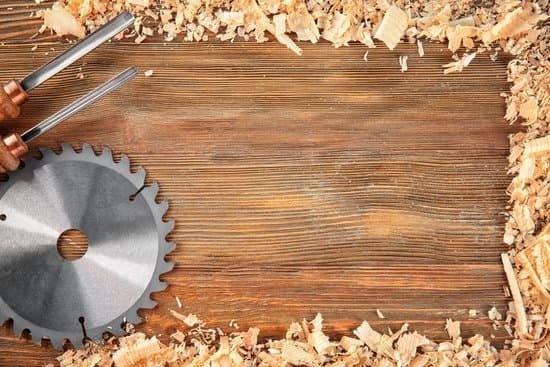The French Cleat System Woodworking is a game-changer in the world of hanging and organizing. This innovative system has gained popularity among woodworkers for its efficiency and versatility. By understanding the anatomy of a French Cleat System, you can explore its various components and their functions. In this article, we will delve into the advantages of using this system and why woodworkers swear by it.
The French Cleat System is a revolutionary way to hang and organize your tools, equipment, and other items in your woodworking space. It involves the use of two interlocking pieces that securely hold items on the wall or any other surface. The system consists of a cleat with a beveled edge that is mounted on the wall, while another cleat with a corresponding angle is attached to the item being hung.
Understanding how this system works requires exploring its various components and their functions. From the type of material used for the cleats to their size and shape, each element plays a crucial role in ensuring proper installation and support. By comprehending these aspects, you can make informed decisions when building your own French Cleat System.
Woodworkers love using the French Cleat System because of its numerous advantages. Not only does it provide exceptional strength and stability, but it also offers flexibility in adjusting and rearranging items as needed. Additionally, this system allows for efficient utilization of wall space in small workshops or garages where every inch counts. With the ability to hang heavy tools or delicate pieces with ease, it’s no wonder woodworkers have embraced this versatile hanging system.
In the following sections of this article, we will guide you through building your own French Cleat System step-by-step. From selecting the right materials to installation techniques, we’ll provide all the information you need to get started. Moreover, we’ll explore creative ideas for utilizing this system in your woodworking projects and offer troubleshooting tips to overcome potential challenges.
Whether you’re a seasoned woodworker looking to optimize your workspace or a beginner in need of efficient organization solutions, the French Cleat System Woodworking is worth considering. In the next section, we will dive into the anatomy of this system and explore its components in detail.
Understanding the Anatomy of a French Cleat System
The French Cleat System is a highly effective and popular method for hanging and organizing items in woodworking spaces. To truly understand the system, it is important to explore the various components that make up its anatomy and their functions.
- Cleat: The main component of the French Cleat System is the cleat itself. It consists of two pieces of wood, typically 2x4s or plywood, cut at a 45-degree angle along one edge. One piece is mounted on the wall or workbench, while the other piece is attached to the item being hung. The angle allows for a secure fit and provides stability when items are hung.
- Mounting Surface: The mounting surface refers to the area where the cleats are installed in order to hang items. This can be a wall, workbench, or any other solid surface that can support weight. It is important to ensure that the mounting surface is sturdy and properly prepared before installing the cleats.
- Fasteners: The French Cleat System relies on strong and sturdy fasteners to hold everything together securely. Commonly used fasteners include screws and nails, depending on personal preference and the type of material being used for both the cleats and mounting surface.
Understanding these components and their functions will help you make informed decisions when building your own French Cleat System. By choosing appropriate materials, preparing your mounting surface correctly, and using proper fasteners, you can ensure that your system is stable, efficient, and long-lasting.
Advantages of Using the French Cleat System
The French Cleat System is a popular choice among woodworkers for its numerous advantages and efficient hanging capabilities. This section will explore the various advantages of using the French Cleat System in woodworking projects, including its versatility and efficiency.
One major advantage of the French Cleat System is its versatility. With this system, woodworkers have the flexibility to rearrange and adjust their storage space as needed. The cleats can be easily mounted on any wall surface and can accommodate a wide range of tools and accessories. Additionally, the cleats can be placed at different heights and angles, allowing for customization based on individual preferences and project requirements.
Another advantage of the French Cleat System is its efficiency in organizing and maximizing space. The system utilizes vertical storage space effectively by allowing for easy access to tools while keeping them off the work surfaces. This not only improves workflow but also minimizes clutter in the workspace, creating a more organized and efficient environment for woodworking projects.
Furthermore, the French Cleat System offers strength and stability when it comes to hanging heavy objects. The interlocking design of the cleats ensures that items are securely held in place without worrying about them falling or shifting during use. This reliability makes it ideal for storing larger tools or equipment, providing peace of mind to woodworkers.
Step-by-Step Guide to Building Your Own French Cleat System
Choosing the Right Materials for Your French Cleat System
When building your own French Cleat System, it is important to choose the right materials to ensure its stability and durability. The two main components you will need are the cleats and the wall brackets. For the cleats, it is advisable to use hardwood such as oak or maple, as they have excellent strength properties. You can find pre-made cleats at most hardware stores or you can easily make them yourself using a table saw.
For the wall brackets, you can use a variety of materials such as plywood or MDF (medium-density fiberboard). These materials are affordable and readily available, making them ideal choices for DIY projects. However, if you prefer a more professional look, you can also use aluminum T-tracks or steel brackets. Whichever material you choose, make sure it is thick enough to securely hold your tools and accessories.
Measuring and Installing Your French Cleat System
Before installing your French Cleat System, it is crucial to properly measure and plan out the layout on your wall. Start by determining the desired height for your system and mark it on the wall with a pencil. Next, measure and mark where each cleat will be positioned along that line. It is recommended to space the cleats roughly 16-24 inches apart to evenly distribute weight.
Once you have all your measurements marked on the wall, it’s time to install the wall brackets. Using a level and screws or nails appropriate for your wall type (e.g., drywall anchors for plaster walls), attach each bracket securely to the wall at its designated location. Double-check that each bracket is level before moving on.
With your wall brackets in place, it’s now time to attach the corresponding cleats onto your woodworking tools or accessories. Position each cleat so that its angled edge matches up with the wall brackets. Secure the cleats to your items using screws or bolts, ensuring a tight fit.
Finally, hang your tools and accessories onto the wall brackets and enjoy the benefits of your newly constructed French Cleat System. It’s important to periodically check the stability of your system and make any necessary adjustments to ensure its continued effectiveness.
Creative Ideas for Utilizing the French Cleat System in Your Woodworking Projects
One of the greatest advantages of the French Cleat System in woodworking is its versatility and adaptability. Not only does it provide a reliable and efficient way to hang and organize tools, but it can also be utilized in various creative ways to enhance your woodworking projects. In this section, we will explore some innovative uses and design inspirations for incorporating the French Cleat System into your projects.
One popular use of the French Cleat System is for storage solutions. By installing a French cleat on a wall or workbench, you can easily create custom storage shelves or cabinets that can be easily mounted and dismounted as needed. This allows for flexible arrangements and easy reorganizing of tools and supplies. Additionally, by using removable hooks or holders that attach to the cleat, you can hang smaller tools such as clamps, hammers, or screwdrivers.
Another creative use of the French Cleat System is to create a mobile workshop cart or tool rack. By attaching a cleat to the back of the cart or rack and another one on a wall in your workshop, you can easily secure your cart or rack in place when working and then unmount it when you need to move it elsewhere. This provides convenience and mobility while keeping your tools organized.
Furthermore, the French Cleat System can also be used for displaying finished woodworking pieces. By incorporating a cleat into the design of shelves or display cases, you can achieve a sleek and clean look with hidden mounting hardware. This not only highlights your craftsmanship but also allows for easy removal and rearrangement of displayed pieces.
Overall, the French Cleat System offers endless possibilities for creative integration into woodworking projects. Whether it’s creating customized storage solutions, building mobile carts or racks, or showcasing finished pieces in an elegant way, this hanging system brings both functionality and aesthetic appeal to your workspace.
| Creative Ideas | Benefits |
|---|---|
| Custom storage solutions | Flexible arrangements and easy reorganizing of tools and supplies |
| Mobile workshop cart or tool rack | Convenience and mobility while keeping tools organized |
| Displaying finished woodworking pieces | A sleek and clean look with hidden mounting hardware, easy removal and rearrangement of displayed pieces |
Troubleshooting Common Challenges and Mistakes in Installing and Using a French Cleat System
The French Cleat System is known for its efficiency and versatility in organizing and hanging items in woodworking spaces. However, like any other system, it is not without its challenges. In this section, we will discuss some common challenges and mistakes that woodworkers may encounter when installing and using a French Cleat System, as well as provide guidance on how to overcome these issues.
One common challenge is ensuring proper alignment during installation. The cleats must be perfectly level and oriented correctly to ensure stability and functionality. If they are not aligned properly, the items being hung may tilt or fall off. To address this issue, it is crucial to use a level tool when positioning the cleats. It is also helpful to mark the placement of the hardware on the wall before installation to ensure accurate alignment.
Another potential challenge arises when using a heavy load on an improperly sized cleat. Each project has different weight requirements, so choosing the right size of cleat is essential for proper support.
If the cleat is too small or weak for the intended load, it can cause damage or even failure of the system. To avoid this problem, it is recommended to consult weight capacity charts provided by manufacturers or seek advice from experienced woodworkers who have worked with similar projects.
One mistake that beginners often make is applying excessive force when hanging items on a French Cleat System. Since the design relies on interlocking angles, too much force can damage or weaken the connection between the cleats and accessories.
It is important to remember that once securely attached to the system, there should be no need for excessive force during regular use. Taking care not to overload or forcefully hang items will help maintain the integrity of the system over time.
By being mindful of proper alignment during installation, choosing correctly sized cleats for various loads, and avoiding excessive force when hanging items, woodworkers can troubleshoot common challenges that may arise with a French Cleat System. With these strategies in mind, individuals can ensure the system functions efficiently and provides long-lasting support for their woodworking projects.
French Cleat System vs. Traditional Wall Mounts
When it comes to hanging and organizing items in your woodworking space, you may have considered traditional wall mounts. However, the French Cleat System provides an alternative that is worth exploring. In this section, we will compare the strengths, flexibility, and ease of use of the French Cleat System with traditional wall mounts.
Strength
One of the main advantages of the French Cleat System over traditional wall mounts is its superior strength. The design of the system allows for a secure and stable attachment between the cleats and the objects being hung. The interlocking cleats create a strong connection that can support heavy loads without sagging or falling.
On the other hand, traditional wall mounts rely on fasteners such as screws or nails to hold objects in place. While these methods can be effective for lighter items, they may not provide sufficient strength for heavier or bulkier items. Additionally, over time, these fasteners can become loose or damaged, compromising their holding capacity.
Flexibility
Another advantage of the French Cleat System is its flexibility. With this system, you have the ability to easily rearrange or add new items to your woodworking space without having to drill additional holes in your walls. The cleats can be easily adjusted or repositioned as needed, providing a versatile solution for organizing your tools and equipment.
In contrast, traditional wall mounts are often fixed and permanent. Once they are installed, making changes to their position or adding new items requires drilling new holes and potentially leaving unsightly marks on your walls. This lack of flexibility can make it difficult to adapt your workspace as your needs change over time.
Ease of Use
Lastly, the French Cleat System offers a high level of ease of use compared to traditional wall mounts. Installing and adjusting the cleats is a straightforward process that does not require advanced technical skills. The interlocking design of the cleats ensures a secure fit, and hanging or removing objects can be done quickly and easily.
Traditional wall mounts, on the other hand, may require more effort and time to install properly. Determining the correct placement for the mount, drilling precise holes, and ensuring proper alignment can be challenging for those who are less experienced in woodworking. Additionally, removing items from traditional wall mounts may require tools or additional steps.
Expert Tips and Tricks for Fine-tuning Your French Cleat System
The French Cleat System is an efficient and versatile hanging system for woodworking projects that can revolutionize the way you hang and organize your tools and equipment. To get the most out of your French Cleat System, here are some expert tips and tricks for fine-tuning it, maximizing efficiency, and optimizing your woodworking space.
- Securely Attach Cleats: One of the key elements in a French Cleat System is the cleats themselves. To ensure that your system is stable and secure, make sure to attach the cleats to the wall using strong anchors or screws. It is recommended to use at least three screws per cleat for maximum stability.
- Leveling: When installing your French Cleat System, it is essential to make sure that all components are level. Use a spirit level or laser level to ensure that both the back cleats mounted on the wall and the front cleats attached to your tools or shelves are perfectly level. This will prevent any imbalance or tilting of items hung on the system.
- Weight Distribution: Consider the weight distribution of items you plan to hang on your French Cleat System. Heavier tools should be placed closer to the wall, while lighter objects can be hung further out on the cleats. This will help maintain balance and prevent any strain on the system.
- Customization: The beauty of a French Cleat System lies in its versatility and adaptability to different spaces and needs. Take advantage of this by customizing your system according to your specific requirements. Whether it’s adding extra shelves, hooks, or even incorporating lighting fixtures, don’t hesitate to customize your system for maximum functionality.
| Expert Tip | Trick |
|---|---|
| Securely Attach Cleats | Use strong anchors or screws and attach cleats using at least three screws per cleat for stability. |
| Leveling | Use a spirit level or laser level to ensure that all components are perfectly level. |
| Weight Distribution | Consider the weight distribution of items and place heavier tools closer to the wall. |
| Customization | Add extra shelves, hooks, or lighting fixtures to customize your system for maximum functionality. |
Implementing these expert tips and tricks will help you fine-tune your French Cleat System, maximize efficiency in your woodworking space, and make the most out of this innovative hanging and organizing solution. Whether you’re a professional woodworker or a hobbyist, the French Cleat System can transform your workspace into one that is organized, easily accessible, and visually appealing.
With careful attention to detail and customization based on your needs, you’ll find that this system truly revolutionizes the way you work.
Showcasing Success Stories
Over the years, the French Cleat System has gained popularity among woodworkers for its efficiency and versatility in hanging and organizing tools. In this section, we will explore real-life examples of woodworkers who have successfully transformed their workspaces using the French Cleat System.
One of the main reasons why woodworkers swear by the French Cleat System is its ability to provide a customized and organized storage solution. By utilizing the various components and design inspirations of the system, woodworkers have been able to create unique setups tailored to their specific needs. The flexibility of this system allows for easy rearrangement and adaptability as woodworking projects evolve.
Not only does the French Cleat System offer efficient organization, but it also promotes a safer working environment. By securely hanging tools and equipment on cleats, woodworkers can eliminate clutter on workbenches or floors that pose potential hazards. This not only improves workflow but also reduces accidents that can lead to injuries.
In conclusion, the French Cleat System has revolutionized the way woodworkers hang and organize their tools and equipment. With its numerous advantages like customization, versatility, and improved safety, it’s no wonder that more and more woodworkers are incorporating this system into their workspaces. Whether you’re a beginner or an expert in woodworking, embracing this system can optimize your workspace and unleash your creativity in ways you never thought possible.

Hi everyone! I’m a woodworker and blogger, and this is my woodworking blog. In my blog, I share tips and tricks for woodworkers of all skill levels, as well as project ideas that you can try yourself.





